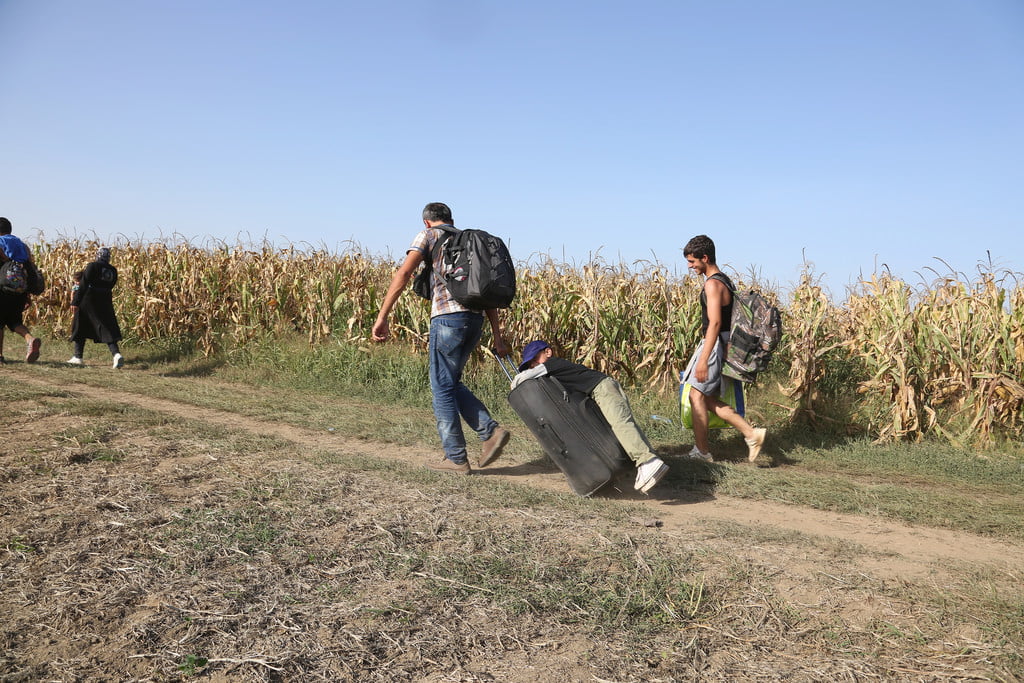It turns out that as developing countries get richer, migration out of those countries actually increases – at least for a little while. That’s according to a set of new reports published today by the Center for Global Development (CGD).
Policymakers in developed countries, including in the U.S. and the European Union, have often cited support for lower-income countries as a way to “tackle the root causes of migration,” following the rationale that economic development reduces the need for people in poor countries to seek a better life abroad. Instead, one of the two CGD studies found that emigration rates actually increase as the gross domestic product (GDP) per capita (economic output per person) of a poor country rises. When the country reaches around $5,000 per capita (today’s level of Honduras or Sudan, for example), the correlation slows; when it hits roughly $10,000 per capita (Jordan or the Philippines), it reverses. This pattern is called the “emigration lifecycle,” and it means that at least in the short-term, “broad, sustainable increases in income” – as the author of the reports Michael Clemens describes it – is likely to prompt more people in lower-income countries to leave their homes, despite conditions improving there.


Additionally, the second study found that those who migrate aren’t the poorest in their countries – they’re actually wealthier and more educated. In low-income countries, the incomes of people who are “actively preparing to emigrate” are 30 percent higher than the population on average – and much of that comes from higher levels of education.
“The world’s poorest are not the ones who migrate,” Clemens’ co-author of the second report Mariapia Mendola, professor of economics the Università degli Studi di Milano Bicocca and Director of the Poverty and Development Program at Centro Studi Luca d’Agliano in Milan, said in a press release. “Migration is seen as an investment, just like higher education. You wouldn’t decide not to send your kids to college just because your family is getting wealthier. Similarly, families are not deciding to stay put as their incomes rise. Migration changes lives and economies for the better.”
According to Clemens – who is the director of Migration, Displacement, and Humanitarian Policy and a senior fellow at CGD – even in the case of asylum seekers and refugees who are fleeing wars, crises and persecution, “economic development facilitates the movement of forced migrants, too.” He says this helps explain why there were so many migrants to Europe from Syria, but not Darfur, Sudan. Because Syria is more developed, potential forced migrants had more money to cover exorbitant transportation and smuggling costs, as well as more education, foreign language skills, friends and family abroad, etc. “If Darfurians had been richer, more of them would have become international forced migrants,” says Clemens.
Aid Organizations Should Embrace These Findings
Clemens acknowledges that some policymakers may take the results of their studies as a reason to cut foreign aid. However, he says doing so would be “unwise.” In fact, he says that while “in principle” aid can reduce forced migration (by being used to prevent humanitarian crises and conflicts or even intercept and detain irregular migrants), it shouldn’t be used to deter migration at all, because doing so just isn’t effective. He pointed to another recent study, which found that it costs $1.8 million in aid just to deter one migrant. The authors of that study concluded that “aid does not deter regular or irregular migration, so it should be used for other purposes.”
Instead, when aid is used for economic development overseas, it is “in everyone’s long-term interest,” says Clemens, helping other countries prevent humanitarian disasters, remain stable, engage with the world economy and even fight pandemics. “Perversely encouraging poverty, out of a misplaced fear of migration is a road to nowhere,” he said in a press release.
Additionally, Clemens says that this pattern of increased emigration as poor countries develop “is not new, or something to fear. We’ve seen it with Sweden a century ago and Mexico a half century ago. We’re seeing it now in Central America, and we’ll hopefully see the pattern emerge in sub-Saharan Africa as that region gets richer.”
